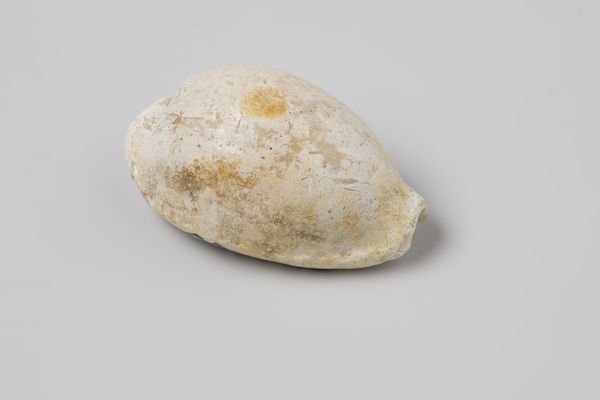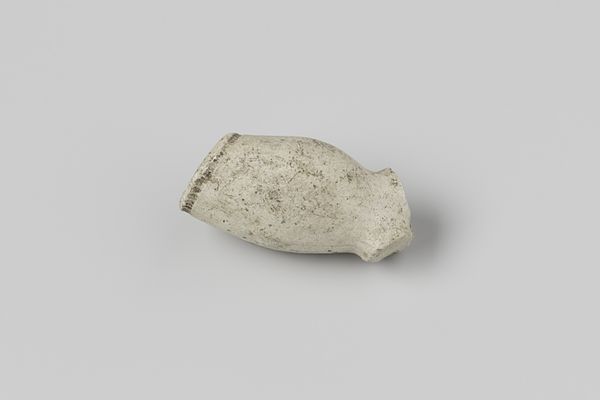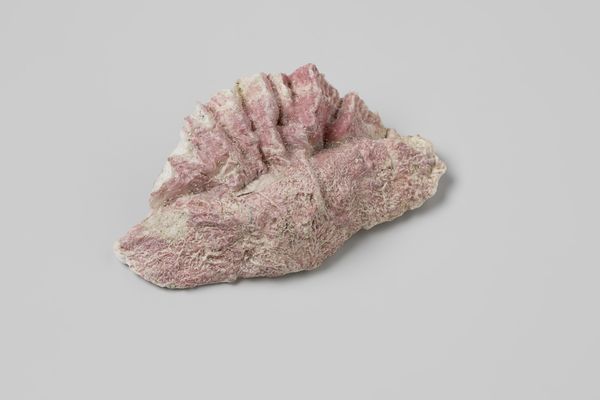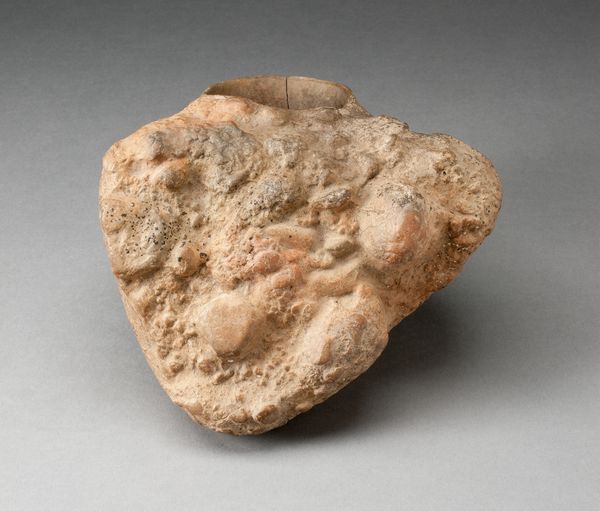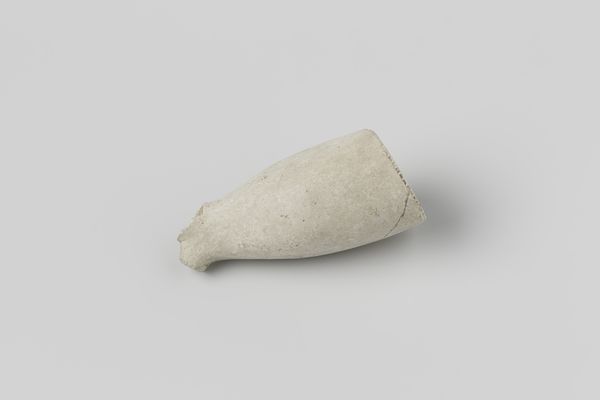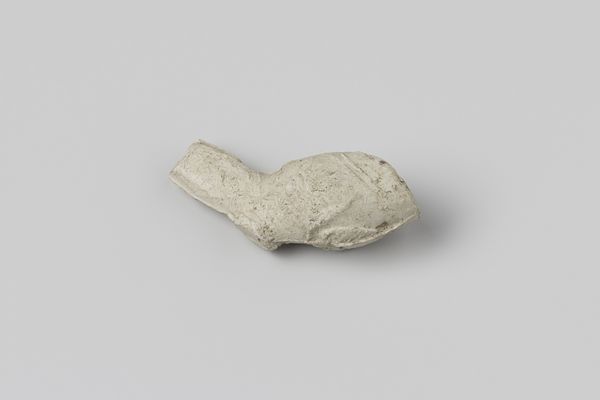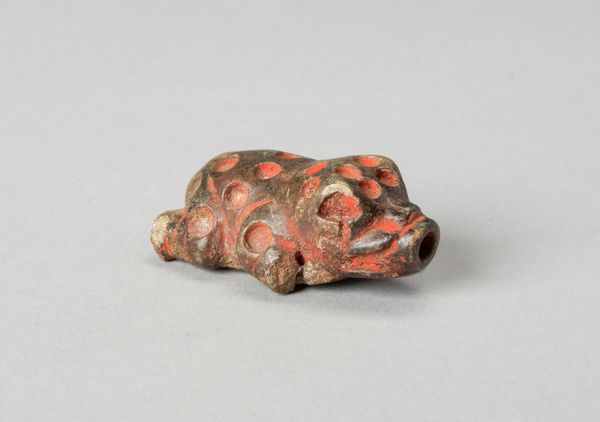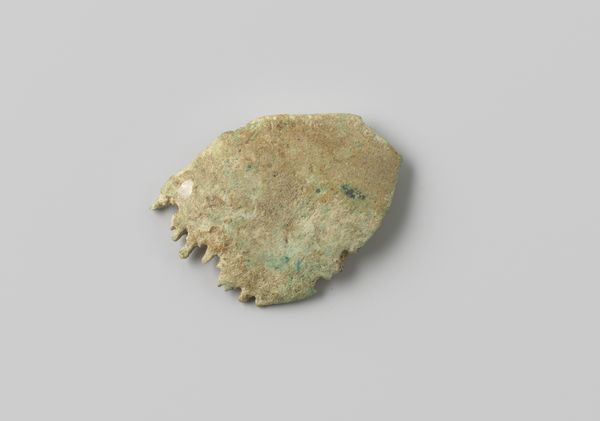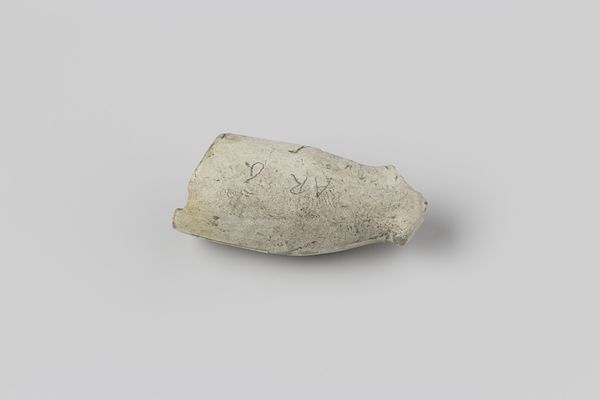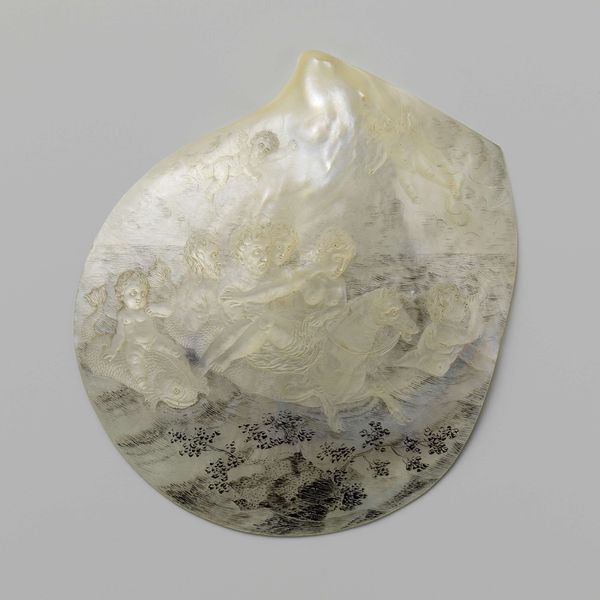
Erosaria spurca shell from the wreck of the Dutch East India ship Witte Leeuw before 1613
0:00
0:00
#
naturalism
#
nature closeup
Dimensions: width 3.2 cm, depth 1.9 cm, height 1.9 cm
Copyright: Rijks Museum: Open Domain
This is an Erosaria spurca shell, recovered from the wreck of the Dutch East India ship Witte Leeuw. Note the shell's compact, ovoid form. Its surface is a complex interplay of textures: a smooth, pale pink base overlaid with encrustations and intricate patterns of marine growth. The shell's coloration is uneven. The formal composition of the shell destabilizes established categories. Is it simply an object of natural beauty, or does it suggest an underlying structure of historical narrative? Consider too, the shell as a signifier, imbued with cultural codes and meanings that extend beyond its mere materiality. It challenges us to move beyond fixed meanings and to engage with new ways of thinking about value, trade, and the interplay between nature and human history. The shell as a formal structure serves as a touchstone for broader philosophical inquiries. The relic prompts us to question how objects acquire meaning over time.
Comments
No comments
Be the first to comment and join the conversation on the ultimate creative platform.

